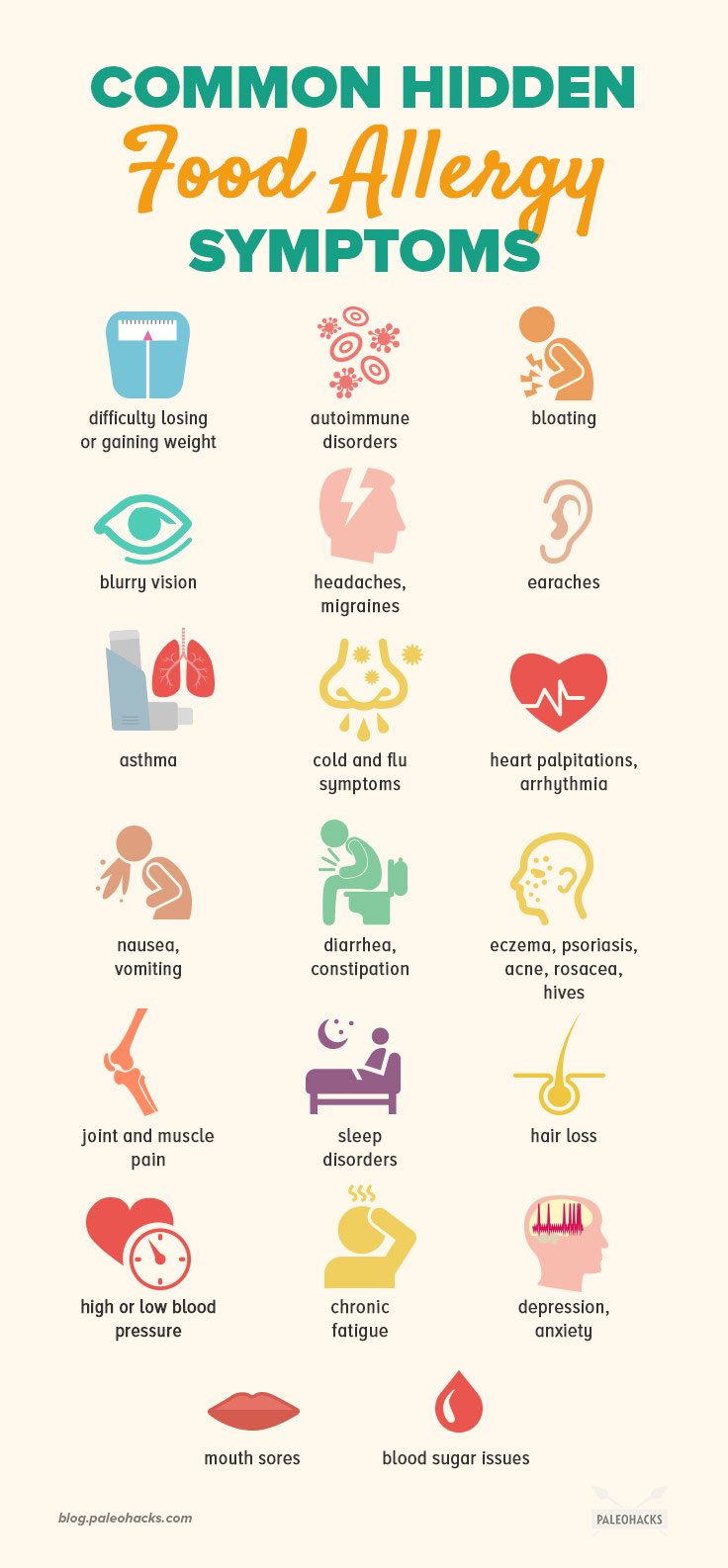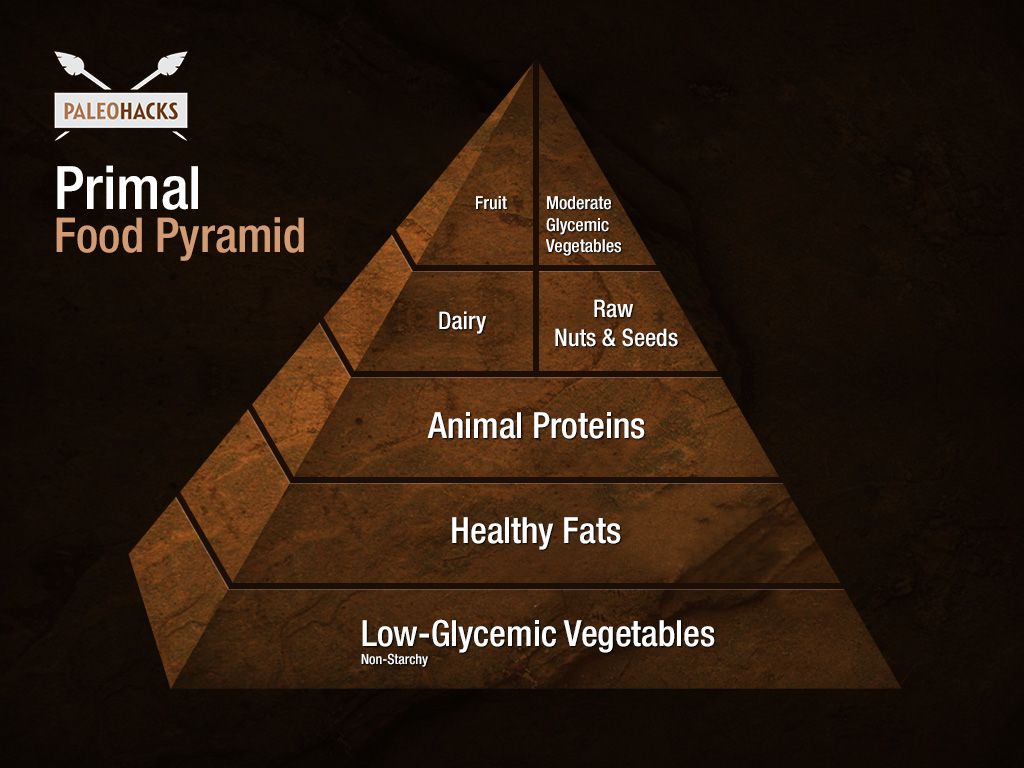Have you heard the saying, “Your biggest problems are the ones you don’t know you have”?
This can be particularly true regarding diet. Many people’s health issues are related to their diet, but they may never make this connection because the symptoms of hidden food allergies are often NOT digestive in nature.
Mystery Health Problems
Although it often goes unrecognized, a plethora of health problems can be related to an underlying food intolerance, sensitivity or allergy. Weight gain, autoimmunity, headaches, sleep issues, acne and other skin problems, digestive issues, chronic fatigue, joint and body pains, chronic diseases and so many other conditions and symptoms are often the result of a hidden food allergy!
Do you struggle with bloating, gas, constipation, or other digestive issues? We’ve created a FREE guide to healing your gut naturally.
Click here to get your FREE copy of our Eat Wild Guide!
Food Allergy vs. Sensitivity vs. Intolerance
True food allergies are mediated by the immune system and are caused by either IgG or IgE food-specific antibodies. (1) They occur immediately and can be life threatening, like an anaphylactic reaction by a child who eats peanuts and is allergic. The most common food allergens in the United States include egg, milk, peanut, tree nuts, wheat, shellfish, and soy. (2)
A food sensitivity is a less severe reaction also mediated by the immune system, but tends to be delayed. A person can react to a food they are sensitive to within hours or up to weeks after consumption. (3) This delay between eating a food and reacting to it makes it very difficult to recognize that food is the culprit, and what food or foods specifically are causing symptoms. [tweet_quote]Delay between eating a food and reacting to it makes it very difficult to recognize that food is the culprit, and what food or foods specifically are causing symptoms.[/tweet_quote]
Unlike food allergies and sensitivities, food intolerance is not due to the immune system reacting to a food. It’s defined as an adverse reaction to food(s), which can result from factors inherent in the food such as antinutrients found in grains and legumes, sulfites found in wine, toxins, or other natural chemicals in food that a person reacts to. Food intolerance can also be due to metabolic disorders in the person consuming the food. (4) An example is lactose intolerance, where a person does not produce enough of the enzyme lactase needed to digest dairy products. Similar to food sensitivities, food intolerance can be a delayed response of hours, days or even weeks, making it difficult to discern the foods that one is intolerant to. Hidden food allergies refer to delayed sensitivity or intolerance reactions to foods that a person may not be aware of.
What Causes Hidden Food Allergies?

It’s important to note that the foods a person consumes the most frequently are often the ones they become intolerant to.
Surprisingly, the cause of hidden food allergies is not necessarily the food itself, but rather the condition of the digestive tract. In a healthy intestinal tract, food is digested down into single amino acids, simple carbohydrates, and smaller fatty acids that are then absorbed into the body through the small intestine. These fully digested food particles are non-antigenic (i.e., they do not trigger the immune system).
For different reasons ranging from eating too quickly, eating when stressed out, overeating, aging and beyond, the digestive capacity declines. For example, the stomach may not be producing enough stomach acid, carbohydrates aren’t chewed thoroughly, or bile production is insufficient. In any case, the end result is that food is not properly broken down and large food molecules make their way to the small intestine, where they can feed pathogenic bacteria and contribute to dysbiosis (overgrown or imbalanced gut bacterial levels). In addition to providing food for undesirable gut bacteria, these larger food molecules are also antigenic and can trigger the immune system if they manage to sneak through the gut wall. (5)
One of the major theories as to how delayed food sensitivities develop is rooted in the concept of leaky gut syndrome, where the gut wall develops tiny holes and becomes permeable, allowing these partially digested food molecules to pass into the body. (6) The immune system (of which 70 percent to 80 percent is located within the gut wall) recognizes these large food molecules as foreign and creates antibodies and inflammation in response. (7) Once the immune system has created antibodies to a food, future consumption of that food will elicit an allergic type reaction that can manifest in many different symptoms, including the ones listed below.
Hidden Food Allergy Symptoms

Most people with a true food allergy are acutely aware of it (like the child with a peanut allergy). Things can get more confusing when food sensitivities and intolerance are the culprit. The reactions are generally not immediate (can occur hours, days or weeks later) and often do not involve digestive symptoms. Eating foods which we are unknowingly sensitive to for years on end can also trigger chronic inflammation, which underlies most diseases of modern society like autoimmunity, heart disease, diabetes, depression, obesity and many more diseases and disorders.
Here’s a partial list of common symptoms that can be caused by delayed food sensitivity or intolerance reactions: (8)
- Difficulty losing or gaining weight
- Autoimmune disorders
- Bloating
- Blurry vision
- Headaches, migraines
- Ear ringing, earaches
- Asthma
- Cold and flu symptoms (weakened immune system)
- Heart palpitations, arrhythmia
- Nausea, vomiting
- Diarrhea, constipation, stomach ache, irritable bowel and other digestive complaints
- Eczema, psoriasis, acne, rosacea, hives, itching, and other skin conditions
- Joint and muscle pain
- Sleep disorders
- Hair loss
- High or low blood pressure
- Chronic fatigue
- Depression, anxiety, mood disorders
- Mouth sores
- Blood sugar issues: hypoglycemia or hyperglycemia, insulin resistance
- And many more symptoms and conditions that can involve virtually any part of the body
How to Identify Hidden Food Allergies

Unfortunately, delayed reactions to food make it impossible to depend on traditional allergy testing, such as the RAST tests for identifying hidden food allergies. Even blood-based IgG food allergy testing can be unreliable and give false positives and false negatives. To date, the “gold standard” for identifying hidden food allergies is the Elimination Provocation Challenge, also known as an elimination diet, where all questionable foods are removed from the diet for several weeks (ideally four to six weeks or longer) and then strategically reintroduced. (9)
The Paleo diet naturally excludes most of the foods that people tend to be intolerant to (like grains, legumes, dairy, processed and refined foods, etc.). Following the Paleo diet for at least four weeks and then strategically reintroducing foods is an effective (and also the cheapest) way to identify hidden food allergies.
It takes at least six weeks for your immune system to reset itself. In other words, after about six weeks, the immune system generally stops producing antibodies towards the various antigens contained in foods that are triggering intolerance. (10) That’s why it’s a good idea to wait for a minimum of four to six weeks (the longer, the better) before “challenging” foods back into your diet to test for hidden food allergies. [tweet_quote]The “Gold Standard” for identifying hidden food allergies is the Elimination Provocation Challenge, also known as an elimination diet.[/tweet_quote]
An adverse reaction to a food may happen immediately or take a couple days to occur and can come in many different forms. Don’t just look for digestive symptoms such as bloating, flatulence, diarrhea, constipation, etc., although these may occur when your bowels are not tolerating the challenged food.
Reactions are often non-digestive, such as skin irritations (acne, rashes, eczema, itchiness, hives, etc.), joint and body pain, headaches, heart racing, chills or hot flashes, temperature and blood pressure changes, sleep disturbances, mood swings, depression, anxiety, fuzzy thinking, poor memory, inflammation, exacerbation of chronic illness, etc. (11)
It’s usually pretty obvious whether or not a food is tolerated when you avoid it for long enough and then reintroduce it. Here are a few more tips for challenging foods back into your diet:
- Pay close attention to your body’s reactions during the challenge period. Keep a food diary and track everything you eat, the date and time that you eat them, and any symptoms for the minutes to days following reintroductions.
- Tracking your body temperature, heart rate and blood pressure before and after reintroducing a food can help identify hidden food allergies. An increase (or decrease) in any of these factors can indicate an intolerance to the food just eaten.
- Take several days or weeks between re-introduction of each food. As mentioned, it can take a few days for your body to react to a food (although it’s usually sooner than this). If you re-introduce too many foods at once, you won’t know which food is causing what reaction. Go slow and be patient!
If you find that you have reactions to certain foods, then it’s probably a good idea to continuing avoiding these, at least for a while. If you discover food sensitivities during your elimination challenge, it would be wise to tend to the health of your gut. As mentioned, poor digestive function and leaky gut syndrome are often the culprit underlying hidden food allergies. The foods that people consume the most are frequently the ones they develop an intolerance to. This is why it’s so important to practice food rotation and to alternate a wide variety of different foods through your diet.
The good news is that food sensitivities can change and go away! The bad news is when we’ve overconsumed any one food, it can take several months (or years) before our immune system quits perceiving it as a threat and reacting to it. You may not need to write off certain foods forever, but for now, you will likely benefit from avoiding reactive foods. And of course, the vast majority of people on the planet will thrive and be able to maintain their optimal health by eating a mostly Paleo diet for the rest of their days.

(Read This Next: Milk Allergy – 9 Signs You’re Allergic and Foods to Avoid)



 Fresh Strawberry Bread Recipe
Fresh Strawberry Bread Recipe








Show Comments